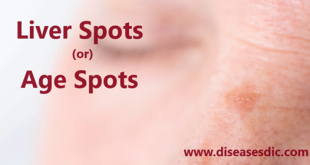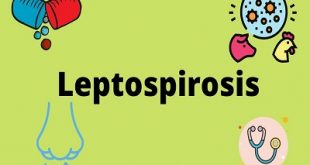Definition
Lactose intolerance is a common digestive problem where the body is unable to digest lactose, a type of sugar mainly found in milk and dairy products. Lactose intolerance develops when the body does not specifically make an enzyme called lactase. Lactase is needed to break down lactose the sugar found in milk. Without this enzyme, lactose remains undigested leading to symptoms such as gas, bloating, diarrhea and cramps.
Lactose intolerance
Epidemiology
Adult-onset lactase deficiency varies widely among countries. Northern Europeans have the lowest prevalence at approximately 5%. Central Europeans have a higher prevalence at approximately 30%, and Southern Europeans have a much higher prevalence at approximately 70%. Hispanic and Jewish populations also have a high prevalence at approximately 70%, while Northern Indians have a much lower prevalence than Southern Indians, at approximately 25% and 65%, respectively. Almost all (90%) Asians and Africans are affected.
Types
There are four main types of lactose intolerance:
Primary lactose intolerance – Caused by a natural reduction in lactase production with age.
Secondary Lactose Intolerance – Caused by illness, injury or surgery to the small intestine which affects lactase production. Treating the underlying condition is usually the best course of action.
Congenital lactose intolerance – This is an inherited condition that runs through families. It is an autosomal recessive trait; so both parents must be carriers of the faulty form of the gene for the child to be affected.
Familial lactose intolerance – This is found in newborn babies. The body is able to produce enough lactase enzyme, but it doesn’t work properly and can’t be used to digest lactose. Like congenital lactose intolerance, this type of lactose intolerance is genetic and passed from generation to generation via autosomal recessive inheritance. It usually only develops after the age of 4.
Risk factors of Lactose Intolerance
Factors that can make you or your child more prone to lactose intolerance include:
Increasing age: Lactose intolerance usually appears in adulthood. The condition is uncommon in babies and young children.
Ethnicity: Lactose intolerance is most common in people of African, Asian, Hispanic and American Indian descent.
Premature birth: Infants born prematurely may have reduced levels of lactase because the small intestine doesn’t develop lactase-producing cells until late in the third trimester.
Diseases affecting the small intestine: Small intestine problems that can cause lactose intolerance include bacterial overgrowth, celiac disease and Crohn’s disease.
Certain cancer treatments: If you have received radiation therapy for cancer in your abdomen or have intestinal complications from chemotherapy, you have an increased risk of lactose intolerance.
Causes
- The body digests lactose using a substance called lactase. This breaks down lactose into two sugars called glucose and galactose, which can be easily absorbed into the bloodstream.
- People with lactose intolerance don’t produce enough lactase, so lactose stays in the digestive system where it’s fermented by bacteria. This leads to the production of various gases, which cause the symptoms associated with lactose intolerance.
- Depending on the underlying reason why the body isn’t producing enough lactase, lactose intolerance may be temporary or permanent. Most cases that develop in adults are inherited and tend to be lifelong, but cases in young children are often caused by an infection in the digestive system and may only last for a few weeks.
Symptoms of Lactose Intolerance
The common primary symptoms of lactose intolerance are gastrointestinal and include:
- Abdominal pain,
- Diarrhoea, and
- Flatulence (passing gas)
Less common symptoms of lactose intolerance include:
- Abdominal bloating,
- Abdominal distention, and
- Nausea
Diagnosis and test
A health care provider makes a diagnosis of lactose intolerance based on
- Medical, family, and diet history, including a review of symptoms
- A physical exam
- Medical tests
Medical, family, and diet history
A health care provider will take a medical, family, and diet history to help diagnose lactose intolerance. During this discussion, the health care provider will review a patient’s symptoms. However, basing a diagnosis on symptoms alone may be misleading because digestive symptoms can occur for many reasons other than lactose intolerance. For example, other conditions such as irritable bowel syndrome, celiac disease, inflammatory bowel disease, or small bowel bacterial overgrowth can cause digestive symptoms.
Physical exam: A physical exam may help diagnose lactose intolerance or rule out other conditions that cause digestive symptoms. During a physical exam, a health care provider usually
- Checks for abdominal bloating
- Uses a stethoscope to listen to sounds within the abdomen
- Taps on the abdomen to check for tenderness or pain
A health care provider may recommend eliminating all milk and milk products from a person’s diet for a short time to see if the symptoms resolve. Symptoms that go away when a person eliminates lactose from his or her diet may confirm the diagnosis of lactose intolerance.
Medical tests: A health care provider may order special tests to provide more information. Health care providers commonly use two tests to measure how well a person digests lactose:
Hydrogen breath test: This test measures the amount of hydrogen in a person’s breath. Normally, only a small amount of hydrogen is detectable in the breath when a person eats or drinks and digests lactose. However, undigested lactose produces high levels of hydrogen. For this test, the patient drinks a beverage that contains a known amount of lactose. A health care provider asks the patient to breathe into a balloon-type container that measures breath hydrogen level. In most cases, a health care provider performs this test at a hospital, on an outpatient basis. Smoking and some foods and medications may affect the accuracy of the results. A health care provider will tell the patient what foods or medications to avoid before the test.
Stool acidity test: Undigested lactose creates lactic acid and other fatty acids that a stool acidity test can detect in a stool sample. Health care providers sometimes use this test to check acidity in the stools of infants and young children. A child may also have glucose in his or her stool as a result of undigested lactose. The health care provider will give the child’s parent or caretaker a container for collecting the stool specimen. The parent or caretaker returns the sample to the health care provider, who sends it to a lab for analysis.
Treatment and medications
Cutting down your intake of milk products that contain lactose from your diet most often eases symptoms. Also look at food labels for hidden sources of lactose in non-milk products (even some beers) and avoid these.
Most people with low lactase levels can drink up to one-half cup of milk at one time (2 to 4 ounces) without having symptoms. Larger servings (more than 8 oz.) may cause problems for people with the deficiency.
Milk products that may be easier to digest include:
- Buttermilk and cheeses (which contain less lactose than milk)
- Fermented milk products, such as yogurt
- Goat’s milk
- Ice cream, milkshakes, and aged or hard cheeses
- Lactose-free milk and milk products
- Lactase-treated cow’s milk for older children and adults
- Soy formulas for infants younger than 2 years
- Soy or rice milk for toddlers
You can add lactase enzymes to regular milk. You can also take these enzymes as capsules or chewable tablets. There are also many lactose-free dairy products available.
Not having milk in your diet can lead to a shortage of calcium, vitamin D, riboflavin, and protein. You need 1,000 to 1,500 mg of calcium each day depending on your age and gender. Some things you can do to get more calcium in your diet are:
- Take calcium supplements with Vitamin D. Talk to your health provider about which ones to choose.
- Eat foods that have more calcium (such as leafy greens, oysters, sardines, canned salmon, shrimp, and broccoli).
- Drink orange juice with added calcium.
Prevention of Lactose Intolerance
The prevention of lactose intolerance actually aims to prevent or alleviate its symptoms, not the condition itself. Of course, the symptoms can be avoided altogether by not consuming anything that contains lactose. This, however, can be difficult since traces of milk and lactose can be found in many pre-made foodstuffs, and not only in dairy products like cheese, milk, yogurt and such. Vegan foods are a good alternative since soy milk, soy yogurt and others do not contain lactose.
Those who do not suffer from severe lactose intolerance can simply focus on foods with low content of lactose, such as low-lactose Cheddar or Swiss cheese, yogurts with active live cultures and similar. Milk will cause much less discomfort if consumed in combination with meals and not alone. In addition, there are lactose formulas that can be purchased in drugstores and used to pre-treat the milk. If added to milk, which is then refrigerated for 24 hours, these formulas can hydrolyse up to 99 percent of the lactose.
It is important to realize that lactose intolerance does not mean having to give up on dairy products forever. Sometimes this condition is only temporary and associated with other gastrointestinal problems, such as stomach flu, a parasitic infection or inflammatory bowel disease.
 Diseases Treatments Dictionary This is complete solution to read all diseases treatments Which covers Prevention, Causes, Symptoms, Medical Terms, Drugs, Prescription, Natural Remedies with cures and Treatments. Most of the common diseases were listed in names, split with categories.
Diseases Treatments Dictionary This is complete solution to read all diseases treatments Which covers Prevention, Causes, Symptoms, Medical Terms, Drugs, Prescription, Natural Remedies with cures and Treatments. Most of the common diseases were listed in names, split with categories.







